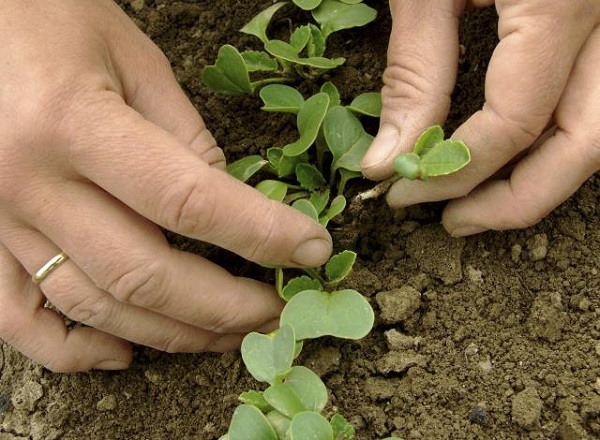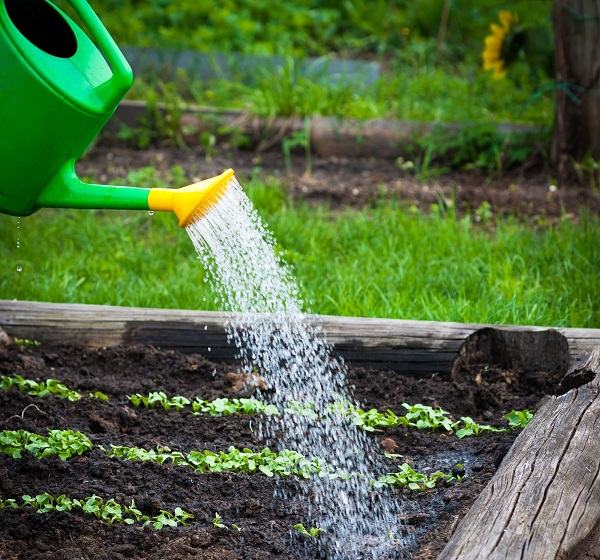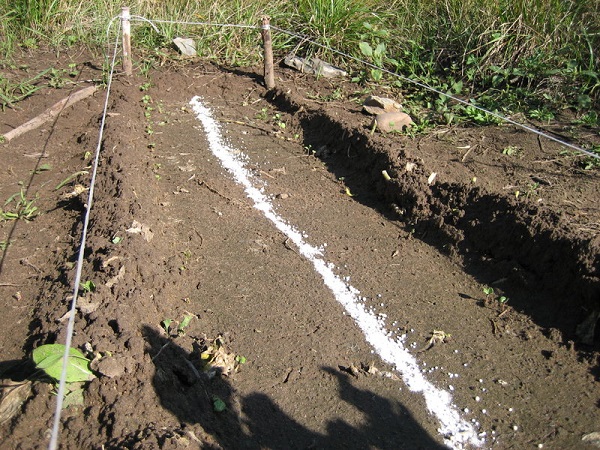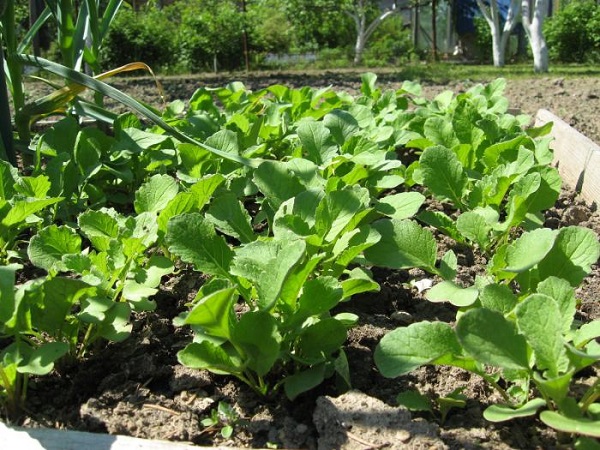Radish is considered the most popular early ripening crop and belongs to green vegetables. The leaves and root vegetables contain a large amount of vitamins. At first glance it may seem that the cultivation of this culture is a simple process. However, to obtain a rich harvest, you should remember about the basic rules for growing and do not forget to thin out the shoots.
Table of contents
Do I need to thin out the radish?
Usually, a common sowing method is used for radish to make it easier for the crop to make its way, and the weeds do not drown it.In addition, it is done so that poor germination of seeds does not affect the future harvest.
Radish care consists of:
- glaze;
- thinning;
- loosening;
- top dressing.
Approximately 5 days later, when the first shoots appeared, the first thinning should be carried out, since the radish is a light-loving culture and will be drawn out from shading and will start up the arrows early.
The optimum is the distance between sprouts of 2-3 cm. Seedlings with expanded cotyledon leaves can be transplanted to a new place. And plants with small leaves are destroyed.
In addition, thanks to thinning the leaves of the plant take a horizontal position. This situation prevents the appearance of arrows.

When and how to thin the bed?
Just in time it is difficult to say when it should be thinning the radish. Usually the second time you need to thin out in about a month. It is necessary to leave a distance so that the root crop can grow and develop. For this, the seedlings are thinned at the rate of 5-6 cm between plants.Picked root vegetables can already be eaten.
Basic rules for thinning:
- Thinning is recommended after watering.
- The optimal time for thinning is vespers.
- Around the sapling should hold the ground with one hand, and the second hand to pull the plant out of the ground. This simple procedure will reduce the risk of a possible capture of a nearby plant.
After thinning, the soil should be compacted with hands and watering the remaining sprouts with warm water. To improve aeration, it is recommended to loosen the ground between the rows.

How to water the seedlings
If this culture is not regularly watered, the roots will grow dry, bitter, hollow. However, the plant should not be poured either, as the root crop will rot. Therefore, in order to get a good, rich, crisp and sweet crop it is necessary to control the dosage and flow of moisture. After each irrigation, it is recommended to loosen the soil.
To avoid early and premature flowering of the plant, it is recommended to water the radish in small portions 2-3 times a week.This procedure helps to reduce the temperature of the soil. In addition, it is necessary to control the ground, and as it dries, to carry out watering the beds with the plant.
The first time the soil is watered immediately after sowing the plant.
The important point when watering is the depth of watering:
- first watering the bed so that the water penetrates to a depth of 8 cm;
- when root crops are formed, water the plant to a depth of 15 cm.
For irrigation suitable simple clean water, a solution of tobacco or ash, herbal infusion. It is recommended to combine watering with prevention against pests. Radish has a developed root system and in some varieties the root can grow up to 30 cm deep.
This should be considered when watering, it is necessary that he had enough moisture to power. Improper moistening and drying out of the soil can lead to the plant's strelkovo, dry and empty root crops.
A few hours before harvesting spend the last watering the plant. Thanks to this, the roots will be tasty, juicy and will last longer.

How to feed radishes for a good harvest
Radish requires nutrient soils, and for this you need to feed the soil. However, this cult can accumulate nitrates. For this reason, care should be taken to feed and avoid chemical fertilizer preparations.
In the autumn there is a major fertilization. When digging into the soil add organics. In the spring, before planting in the ground add complex mineral fertilizers. Such top dressing is sufficient on fertile soils.
Poor barren soils need feeding, which is carried out with irrigation.
As fertilizers during the growth of radish are perfect:
- potassium chloride;
- superphosphate;
- solution of bird droppings or slurry.
However, it should be remembered that a glut of nitrogen can cause the scrub of the shrub, and not build-up of the root.
Planting radish is recommended to mulch with compost. Such a growing scheme allows for watering vegetables useful nutrients to gradually penetrate into the soil and feed the roots of the plant.
In addition, at the top of the soil can be fertilized with humus and peat. However, their layer should not be higher than 1 cm. Due to this procedure, less evaporation of moisture occurs, and it is retained in the ground.

Nitrogen fertilizers are applied during irrigation with the calculation of 20-30 g per square meter. Radish is contraindicated to fertilize with fresh manure, because such feeding will cause flowering plants, and not the development of the root. To collect a rich and large crop of this crop, it is recommended to regularly weed and loosen the aisles.
Radish needs thinning. Without this procedure, the root crop will grow small and deformed, since the seedlings will fight among themselves for the necessary conditions for growth: water, food, light. Therefore, many gardeners spend thinning radish at least twice - the first time after germination, and the second time about a month after planting.
https://www.youtube.com/watch?v=3jML1dhiRDQ
